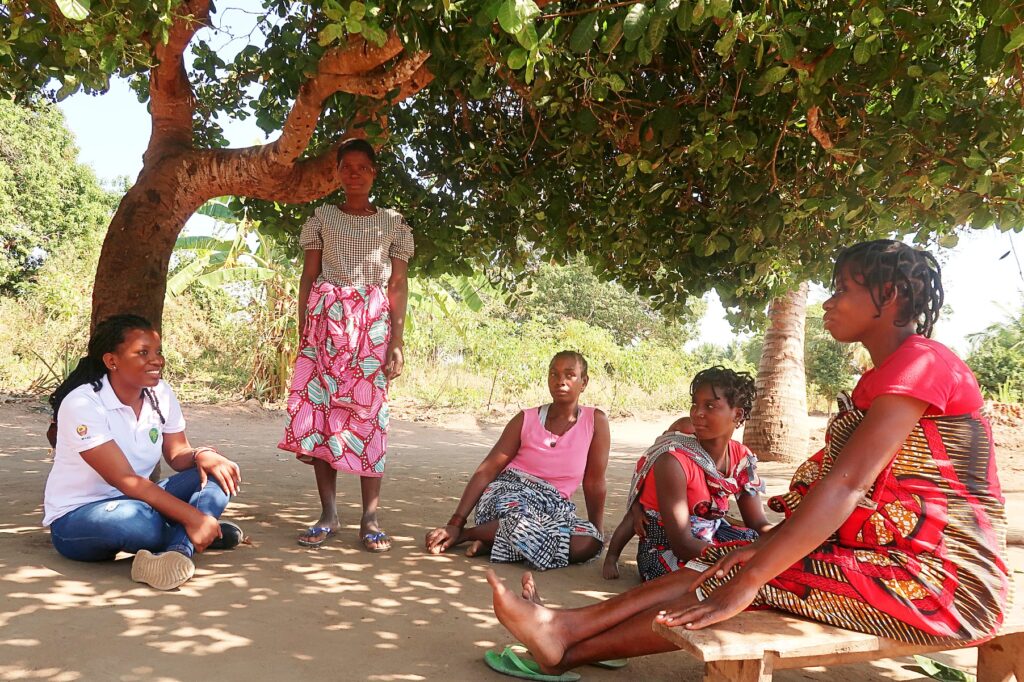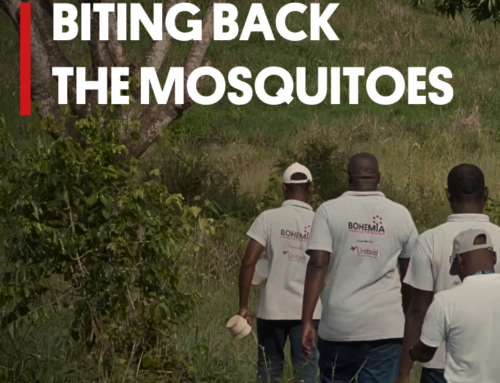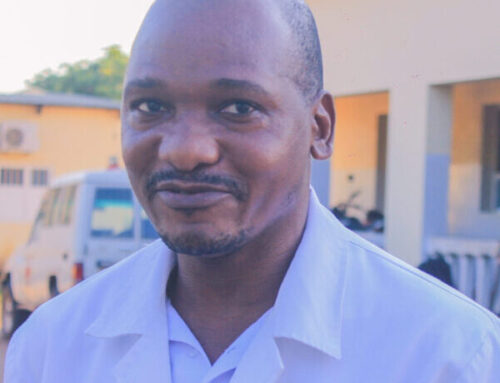
Aida Xerinda, BOHEMIA’s Community Liaison Officer in Mopeia, shares her experience of working with the community as part of the trial.
As a child, what did you want to be when you grew up? Were you already attracted to the field of health?
As a child, I dreamt of being a doctor. This passion for saving lives manifested in little ways like looking after injured little birds that fell from the trees, feeding them water and rice, and helping them recover. Over the years, as I grew up, my dreams changed. I went on to graduate in International Relations and Diplomacy, but my goal remained the same – make good health accessible to all.
I was lucky to find an opportunity to work on community engagement with the BOHEMIA project. This allowed me to play my part in the fight against malaria by working with the communities in endemic regions to generate evidence on new tools that can help prevent malaria.
When you heard of the BOHEMIA project, what did you first think about using ivermectin for malaria control?
Malaria is one of the biggest public health challenges in the African context, especially for a country like Mozambique. Most people are aware of the various malaria prevention tools, such as the use of mosquito nets, indoor spraying, and cleaning the surrounding environment. But the rapid rise in insecticide resistance in the region means that we need new tools urgently.
Ivermectin is a familiar drug to our community as it is already being used in campaigns to treat lymphatic filariasis and head lice. If we are able to generate evidence that ivermectin can be used for malaria vector control, it is one additional tool for the malaria community. As progress against malaria has plateaued in the past few years, we need to explore every scientific avenue to make sure that hard-won gains are not reversed.
As progress against malaria has plateaued in the past few years, we need to explore every scientific avenue to make sure that hard-won gains are not reversed.
What is missing in the current efforts to fight malaria, and how can this gap be filled?
From my experience of working at the grassroots level with the community, two of the main barriers to preventing malaria transmission are: i) incorrect use of mosquito nets and ii) widespread resistance of mosquitoes to insecticides. It is not enough to stick with the old tools, we need reinforcements in the malaria toolbox. And this is only possible through innovation.
The project’s approach to reducing malaria transmission via a mass drug administration campaign is innovative because BOHEMIA is reimagining the use of an old drug and invoking a collective vision for malaria vector control. The success of the intervention largely lies in the participation of the community.
What is your role in the BOHEMIA trial and what do your day-to-day tasks look like?
I am the Community Liaison Officer of the BOHEMIA project in Mopeia. This is an important role for a mass drug administration (MDA) trial because we need to ensure clear and regulation communication with the involved community. Prior to the MDA, we spent several months getting to know the community in Mopeia, raising awareness about malaria research, and going door to door to ensure buy-in from households for greater coverage of the trial.
We need to ensure clear and regulation communication with the involved community.
My daily tasks include working with a team of 13 members in community mobilization activities like household visits, meetings with the village chiefs, and organizing social activities. I am also the bridge between the scientific researchers of the project and the fieldworkers, ensuring that the field activities contribute to the scientific goals of the project.
Tell us about a successful community engagement tactic that your team used to mobilize participants for the trial.
During the early phase of the community engagement activities, we noticed that the community meetings we organized saw very low participation. Thus, we teamed up with the social scientists to explore the best tactics to gather people. After a few weeks of participant observation, Bruno Caetano from the social science team came up with the brilliant idea of using sports for community engagement.
 Photo: Murchana Roychoudhury / BOHEMIA
Photo: Murchana Roychoudhury / BOHEMIA
Football is one of the most popular social activities in the village. So we decided to create our own football team comprising of the BOHEMIA project’s administrators, entomologists, and fieldworkers and we started organizing FC BOHEMIA v/s FC Mopeia football matches. These football matches attracted people of all ages, gender, and socioeconomic backgrounds in the village. And thus, during the match, we would include our community engagement activities during the half time to get our messages across to the community.
What were some of the challenges you faced in your work with the community? And how did you overcome them?
One of the biggest challenges we faced was the floods and cyclones that affected the Mopeia district in early 2022. Access to remote villages became even more difficult and quite often, our teams would have to cross dangerous rivers and marshes to distribute the drug on time.
Our teams would have to cross dangerous rivers and marshes to distribute the drug on time.
On the social side, we dealt with several cases of misinformation including the rumour about some of the BOHEMIA fieldworkers being vampires because they worked outdoors at odd hours, collecting mosquitoes. To address these issues, we worked with the community leaders to legitimize our presence, as these leaders are trusted by the community.
MDAs in remote regions are one of the most challenging types of clinical trials. But with transparent communication and long-term efforts to build trust and engagement, we can ensure high participation.






